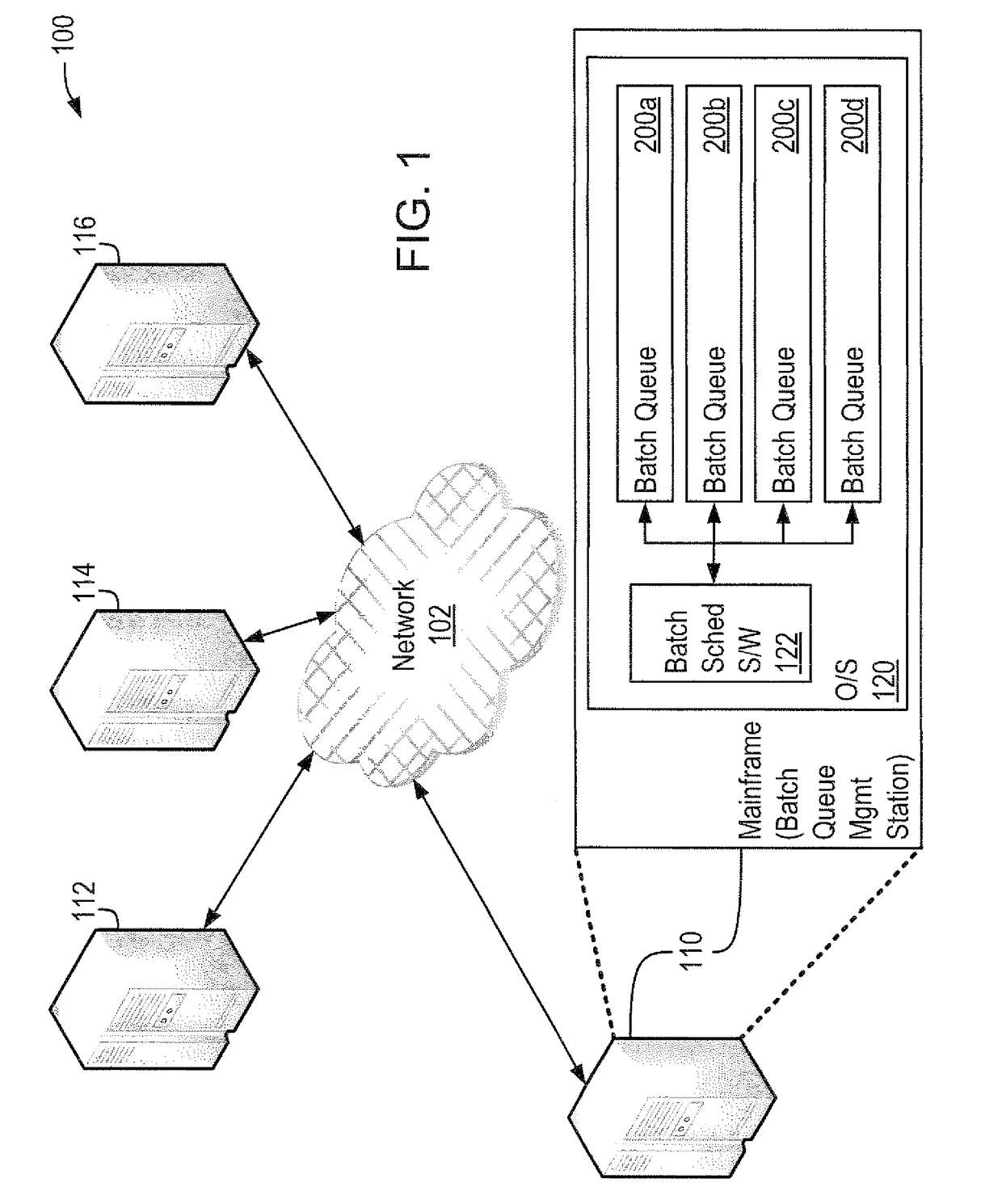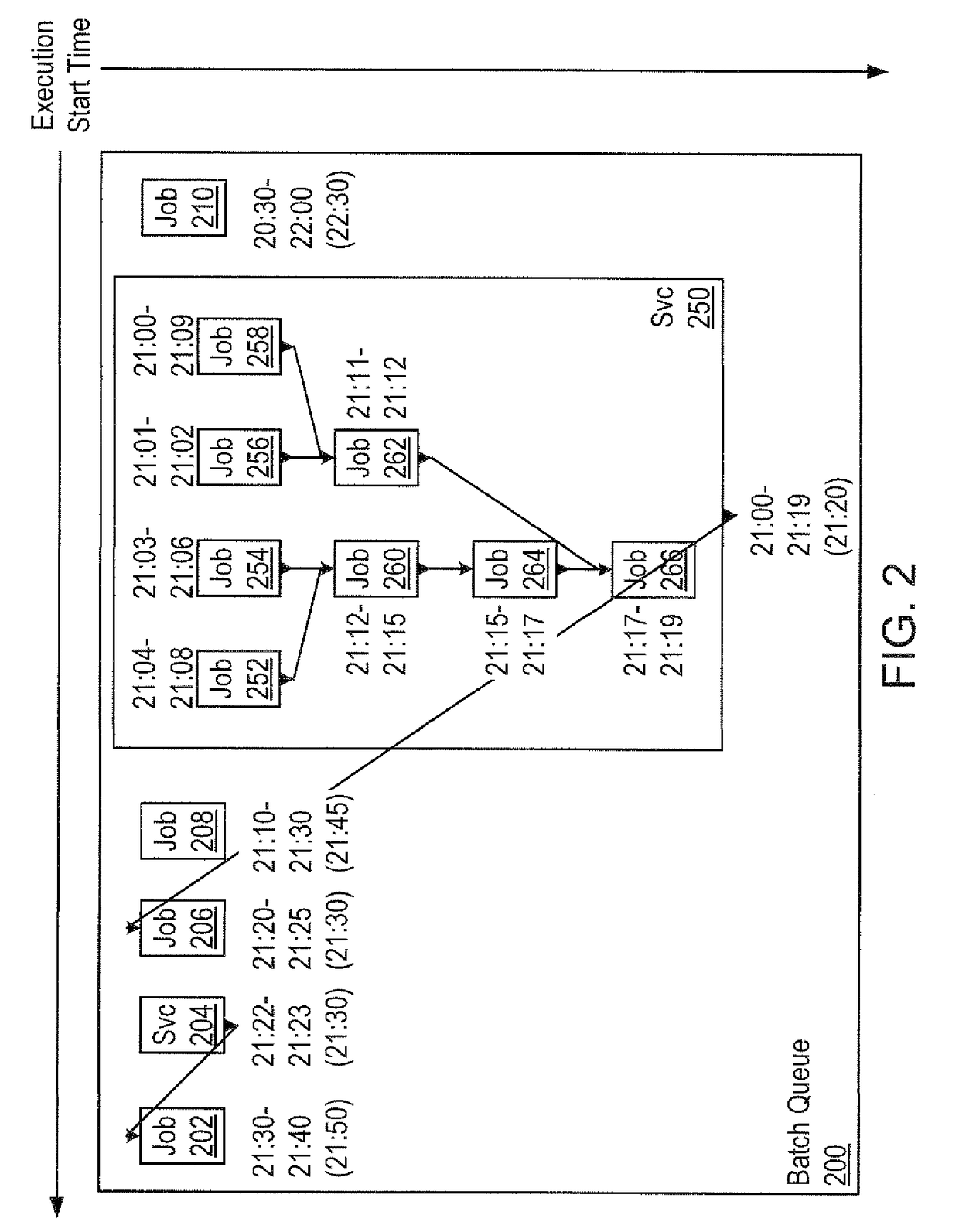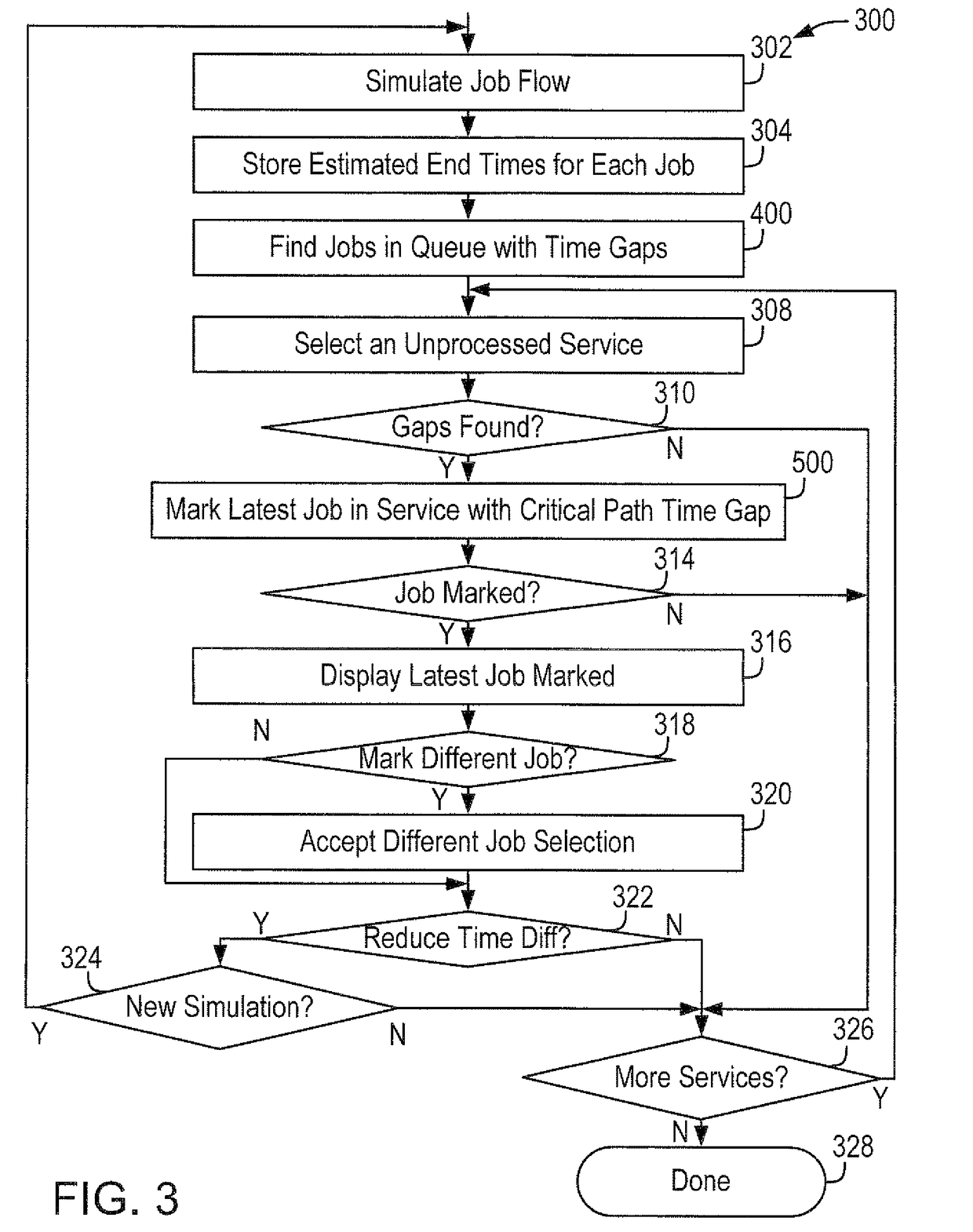Method and system for traversing in reverse chronological order along a critical path of a plurality of jobs, and reducing time gaps between jobs until an estimated end time of the last job is less than or equal to a target end time
a technology of reverse chronological order and batch jobs, applied in the field of systems and methods used to manage the flow of batch jobs, can solve problems such as not being practicable or even achievable by the operator
- Summary
- Abstract
- Description
- Claims
- Application Information
AI Technical Summary
Benefits of technology
Problems solved by technology
Method used
Image
Examples
Embodiment Construction
[0015]The present disclosure describes systems and methods for managing and improving the execution times of a flow of batch jobs within a computer system. In at least some embodiments, such improvements are achieved by software executing on the computer system that analyzes groups of related batch jobs scheduled for execution (each group hereinafter referred to as a “Service”), identifies jobs that if rescheduled would have the most significant impact on the completion time of a Service (i.e., jobs within the Service's critical path), and allows an operator to select and reschedule jobs within each Service.
[0016]FIG. 1 shows an example system 100 that includes mainframe computer systems 110, 112, 114 and 116 interconnected by network 102. Each mainframe system may be a source of batch jobs that are submitted to one or more batch queues within system 100. In the example shown, mainframe 110 (e.g., an IBM System z10®) runs operating system (O / S) 120 (e.g., z / OS®) within which multipl...
PUM
 Login to View More
Login to View More Abstract
Description
Claims
Application Information
 Login to View More
Login to View More - R&D
- Intellectual Property
- Life Sciences
- Materials
- Tech Scout
- Unparalleled Data Quality
- Higher Quality Content
- 60% Fewer Hallucinations
Browse by: Latest US Patents, China's latest patents, Technical Efficacy Thesaurus, Application Domain, Technology Topic, Popular Technical Reports.
© 2025 PatSnap. All rights reserved.Legal|Privacy policy|Modern Slavery Act Transparency Statement|Sitemap|About US| Contact US: help@patsnap.com



